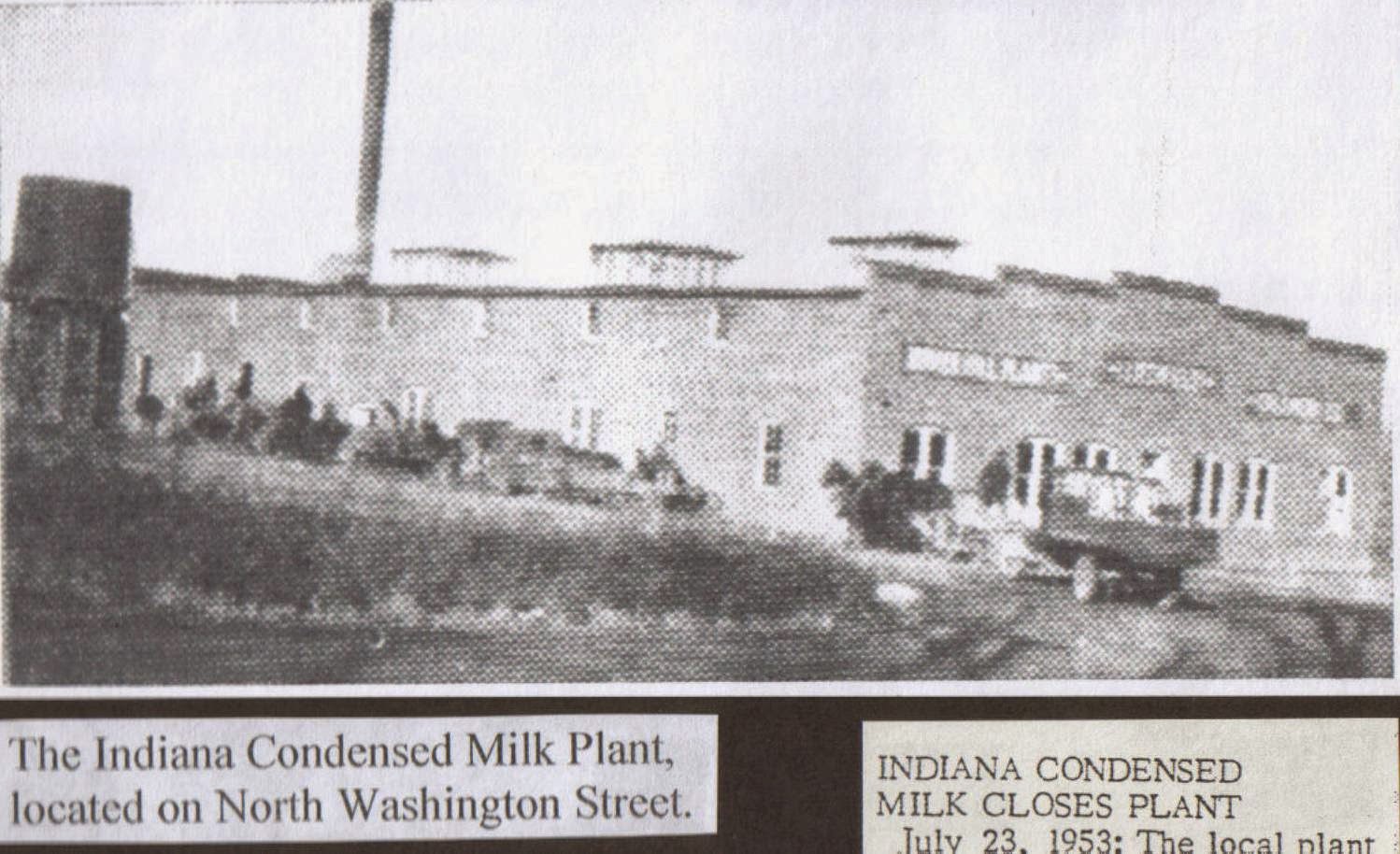The Indiana Condensed Milk Company of Indianapolis, IN, purchased the Bunker Hill Condensing company in March 1924. Bunker Hill was Plant No. 6 according to the sign on the building, which was on North Washington Street. This is where the new duplex apartments are located now. Benezette N. Wilson, whose father and uncle founded the company, was the manager of the Bunker Hill plant for a number of years.
Arthur "Babe" Welch began working at the Condensery for thirty cents an hour in 1933 and worked there until 1952. John Heuer began working there in 1937 and was there when it closed in 1953.
Arthur "Babe" Welch began working at the Condensery for thirty cents an hour in 1933 and worked there until 1952. John Heuer began working there in 1937 and was there when it closed in 1953.
During the spring of the year, some 100,000 pounds of milk a day was received. Long lines of wagons and trucks were on the highway waiting to unload. Farmers took turns taking their milk and their neighbor's milk to town . During this busy time, the Condensery operated seven days a week.
After going through several stages, the evaporated milk was canned and the royal blue label, Wilson Evaporated Milk, was attached. It was packed 48 cans to a case and loaded on freight cars. If a chain of stores ordered the evaporated milk, their label would be put on the can in place of the Wilson label.
The water used in the plant was piped across town from the dammed up portion of the creek on the northeast part of town. The waste was dumped back into the creek on the southeast part of town. This caused quite an odor.
During World War II, the plant was under military supervision. The milk was put in khaki colored cans and sent to the troops. A Corporal did duty here and once a month, and an inspector from the Army would come also for inspection.
A lot of women worked during the war because of the shortage of men. Some of the work was hard and hot, especially when freight cars of coal had to be unloaded in the summer. Men were paid bonuses to unload coal cars after working hours. The supply of cans from railroad cars was unloaded into the second story by the women, which also was a very hot job.
A lot of women worked during the war because of the shortage of men. Some of the work was hard and hot, especially when freight cars of coal had to be unloaded in the summer. Men were paid bonuses to unload coal cars after working hours. The supply of cans from railroad cars was unloaded into the second story by the women, which also was a very hot job.
Newspaper Article - Feb. 6, 1931
Newspaper Article: July 23, 1953 - Indiana Condensed Milk Closes Plant
February 6, 1931: Three members of the Commercial Club of Bunker Hill
would confer with officials of the Indiana Condensed Milk Co. of
Indianapolis on the closing of its "condensery". The members were club
President Carl Williams, Charles E. Drew and R. H. Hayes. The trio
would make every effort to keep it from closing. The local operation
had 25 employees.
July 23, 1953: The local plant of the Indiana Condensed Milk Company
will cease operations here on August 1, according to a notice to all
employees and patrons which was posted this (Thursday) morning at the
plant. The notice reads as follows: After several years of a low milk
supply at Bunker Hill, we reached a conclusion the fore part of this
month that there is not now and is not likely to be in the future a milk
supply adequate to permit the efficient operation of an Evaporated Milk
Plant at this location...
...Read more about this and other Bunker Hill, IL historical stories at https://bunkerhillhistory.org/
--Cite this story: The Bunker Hill IL Historical Society. "A Look Back in Bunker Hill History." Bunker Hill Gazette-News, September 6, 2012.
Redford, Carol, and Betty Triplett. "Bunker Hill History." In Reflections: A History of the Bunker Hill-Woodburn Area, p. 136. Bunker Hill: Bunker Hill Publications, 1993. Provided by the Bunker Hill Historical Society.
--Provided by The Bunker Hill Historical Society















No comments:
Post a Comment